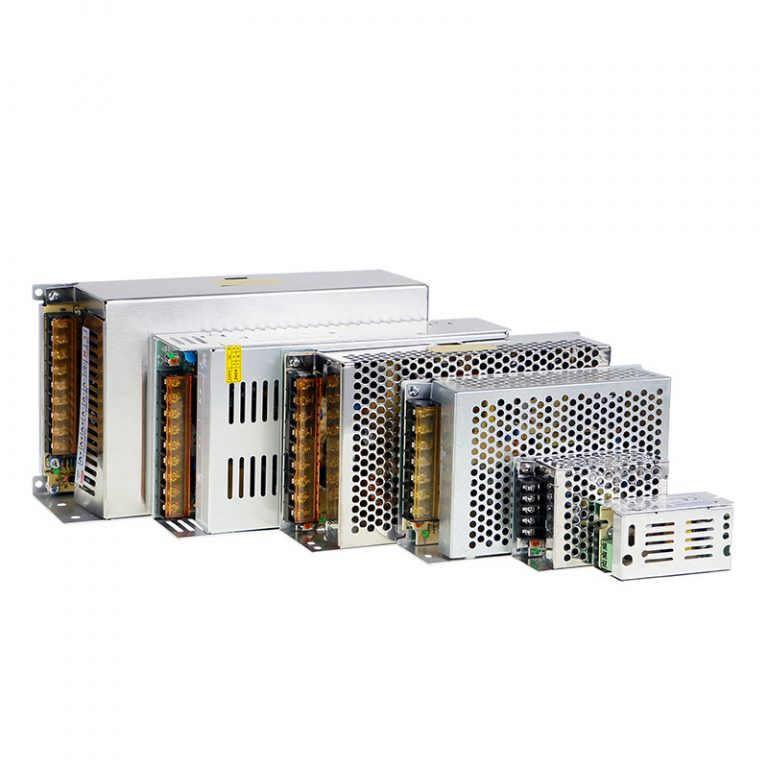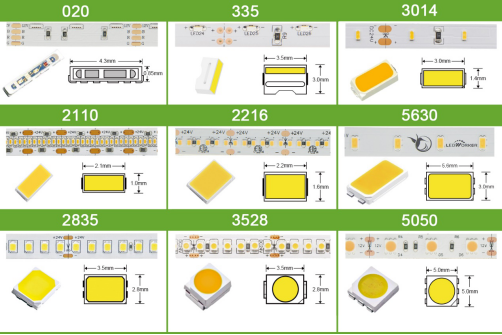LED Driver
- Options: Available in dimmable, non-dimmable, and adapter power supply versions.
- Power Range: Multiple power options ranging from 36W to 500W.
- Protection: Offers short-circuit protection, overload protection, and overvoltage protection for enhanced safety.
- Design: IP20 and IP67 options for indoor and outdoor use, featuring an aluminum housing for efficient heat dissipation.
- Customizable: Supports customization of various plug types to meet specific requirements.
- Cost-Effective: High reliability at a competitive price point.

What is an LED Driver?
Different Types of LED Drivers
LEDWorker Lighting Co., Ltd. is a Shenzhen-based company established in 2012, specializing in LED drivers. With advanced technology and superior manufacturing and R&D capabilities, we provide a full range of LED drivers tailored to meet the diverse needs of projects across various industries. Serving customers in over 200 countries, we offer a variety of power solutions, including MeanWell drivers, dimmable power supplies, non-dimmable power supplies, and adapter power supplies. Our LED drivers are known for their quick delivery time of 3-5 days.
Product Series
Details of Product Categories
1. MeanWell Drivers
MeanWell is a trusted brand in the industry, offering power solutions ranging from 20W to 500W. With output voltages including 5V, 12V, and 24V, and input voltage of 100-240V AC, these drivers are suitable for both waterproof and non-waterproof applications. Renowned for their quality, performance, and stability, MeanWell drivers prevent overloading and overheating, making them ideal for engineering projects across various conditions.

2. Non-Dimmable Drivers
Non-dimmable drivers are cost-effective solutions designed for applications where brightness remains consistent without the need for dimming.
- Power Range: 36W to 300W.
- Applications: Ideal for projects requiring stable illumination without brightness adjustments.
- Options: Available in waterproof and non-waterproof versions.

3. Mains Dimmable Drivers
Mains dimmable drivers enable brightness adjustment from bright to dim, making them suitable for dynamic lighting environments.
- Power Range: A wide range to support diverse industry requirements.
- Applications: Perfect for environments where adjustable brightness is needed, such as residential and commercial spaces.



4. Slim Non-Dimmable Drivers
Slim non-dimmable drivers are compact and thin, designed for space-restricted installations.
- Features: Constant current output ensures stable operation of LED strips.
- Applications: Commonly used in ceiling lights, panel lights, and other installations requiring hidden power supplies.

5. Adaptor Drivers
Adaptor drivers are compact, lightweight power supplies for converting AC to 5V, 12V, or 24V DC.
- Features: Typically rated around 60W, ideal for low-power LED applications.
- Applications: Widely used in ambient lighting and LED strip kits for ease of installation.

Why Choose LEDWorker?
LED drivers are essential for protecting and enhancing the lifespan of LED strips. They include:
- Overload Protection: Safeguards against damage caused by excessive power, ensuring the durability of LED strips.
- Short-Circuit Protection: Automatically cuts off power output during circuit faults, preventing overcurrent damage.
- Overvoltage Protection: Disconnects or reduces the voltage to prevent equipment damage when the voltage exceeds safe levels.
- Stability and Reliability: LED drivers are designed for high stability, featuring lightning, waterproof, and explosion-proof capabilities, making them suitable for harsh environments.
How to Choose the Right Power Supply
1.Identify the Type and Quantity of LED Strips:
- Determine the strip type: SMD 2835, SMD 5050, or COB.
- Select LED density: 60/m, 120/m, or 320/m.
- Choose the voltage: 5V, 12V, or 24V.
- Estimate the total number of strips required for the project.

2.Calculate the Power Requirement:
- Use the LED type, density, voltage, and total length to calculate power needs.
- Factor in a 20% margin for stable power supply operation.
Example: For a 5-meter 5050 strip with 60 LEDs/m: - Power per meter = 12W.
- Total power = 12W×5×1.2=72W12W \times 5 \times 1.2 = 72W12W×5×1.2=72W.
Below is a power table for various LED strips:
| SMD type | SMD per M | Voltage | Watts / M | SMD type | SMD per M | Voltage | Watts / M |
| 2835 | 60 SMD/M | 12V/24V |
|
5050 | 30 SMD/M | 12V/24V | 7W |
| 2835 | 60 SMD/M | 12V/24V | 8W | 5050 | 60 SMD/M | 12V/24V | 14.4W |
| 2835 | 120 SMD/M | 12V/24V | 14.4W | 5050 | 120 SMD/M | 12V/24V | 24W |
| 2835 | 240SMD/M | 12V/24V | 20W | 5730 | 60 SMD/M | 12V/24V | 14W |
| 3528 | 30 SMD/M | 12V/24V | 2W | 335 | 60 SMD/M | 12V | 5W |
| 3528 | 60 SMD/M | 12V/24V | 4.8W | 5050 4in1 | 60 SMD/M | 12V/24V | 18W |
| 3528 | 120 SMD/M | 12V/24V | 7.2W | 5050 4in1 | 84 SMD/M | 12V/24V DC | 24W |
| 3528 | 240 SMD/M | 12V/24V | 16W | 5050 5in1 | 60 SMD/M | 12V/24V DC | 20W |
| 020 | 60 SMD/M | 12V | 5W | 5050 5in1 | 96 SMD/M | 12V/24V DC | 28W |
Note: Actual power may vary from theoretical values due to production differences.
3.Consider the Location:
- Outdoor or Wet Areas: Use waterproof power supplies (IP67).
- Indoor Use: Non-waterproof power supplies are sufficient.
For compact spaces, use multiple smaller power supplies strategically placed.
How to Connect LED Driver/Transformer to Flexible LED Strips
Choose the Right Plug: Select a plug type based on regional standards (e.g., EU or US plug) and connect it to the power input terminal.

Connect to the LED Strip:
Attach the red wire to the positive terminal and the black wire to the negative terminal of the power supply.
Ensure screws are tightened securely, and the strip is firmly connected to the driver.
Watch the video tutorial: How to Connect LED Driver
For further assistance, contact our 24/7 support team for expert advice tailored to your needs!
LED Driver Application
LED drivers are essential for ensuring the safety, reliability, and stable operation of LED strips. By connecting to LED strips, they regulate the power supply to ensure proper functionality and control of illumination while optimizing energy efficiency. Their versatility allows them to play a vital role across various applications, including:
Enhances ambient, task, and accent lighting in residential and commercial spaces.
Powers LED strips for landscape, architectural, and pathway lighting.
Provides reliable power for vehicle LED applications, such as interior lighting and decorative trims.
Ensures stable performance of LED displays and digital signage in diverse environments.
Supports dynamic and aesthetic lighting for events, festivals, and installations.
LED drivers have become an indispensable component of modern lighting solutions, offering enhanced control, efficiency, and functionality in various settings.



FAQs
Here are top asked questions, feel free to contact us for more details.
There are two reasons: maintaining the power operation of 80% of the Led strip can greatly increase the service life of the led chips; in addition, in order to better improve the luminous efficiency, the thermal energy is converted into light energy to the greatest extent. When the flexible Led strips reaches 24W per meter, its heat dissipation problem must be considered. The usual way to dissipate heat is to stick blue adhesive on the back of the Led strips and stick it to the aluminum profiles to help dissipate heat.
When we calculate the theoretical power, we only need to know the power of a single led chip and then multiply it by the number of led chips.
Taking 5050 SMD 60pcs Led strip per meter as a example, the power per meter is 14.4W, 5050 SMD single chip power 0.24W x number of SMD, 60LEDs= 14.4W/M; conventional 3528 SMD power is 0.08W, 2835 SMD The power is 0.1W or 0.2W, and other led chip models are: 3014, 5630, etc.
In theory, the higher the wattage, the brighter the Led strip will be. But brightness isn’t just determined by wattage, and it can’t be determined by wattage alone. So what are the other factors that determine brightness? The brightness is also related to the number of led chips per meter, the display index, the size of the led chip, and the color temperature. Therefore, the wattage is not the only determinant of brightness. On the contrary, the wattage of the Led strip should not exceed the normal wattage. As mentioned earlier, the wattage is too high and the heat dissipation is not good, which will affect the service life of the Led strip.
Customers often ask us whether Led strip can achieve 39W or 48W. In fact, there are many ways to improve the brightness. In addition to environmental protection, the biggest advantage of LED is: energy saving. There is really no need for us to increase the wattage of products that were originally energy-saving and become inefficient. At present, our company has made a high-brightness Led strip. The luminous efficiency of the normal Led strip is: 100-110LM/W, our product can achieve 160-170LM/W. The following is his test report, its luminous efficiency The efficiency is 172.6LM/W :
That is to say, in a Led strip with a normal brightness of 100-110LM/W, the brightness of 28W is: 28W x 100LM = 2800LM, but if we use our high-brightness Led strip, 172LM/W, as long as 2800LM / 172LM = about 16W can be realized. It truly achieves high brightness, energy saving and long service life. If you need more information, please contact us.
In fact, the wattage alone is not enough to quote. Take the 7.2W Led strip as a comparison, customers generally have the following options:
3528SMD 120led per meter
2835SMD 60led per meter
5050SMD 30led per meter
It is not difficult to see from here that different led chip models and different quantities can make the same wattage. Among them, the highest price is: 3528SMD 120 leds per meter, the most cost-effective is: 2835SMD 60 leds per meter, and their brightness is similar, 2835SMD 60leds per meter will be a little brighter.
You can consult our professional sales team for assistance. Selecting the right LED driver depends on several factors:
- Total Power of the LED Strips: Ensure the driver's capacity meets or exceeds the combined wattage of all connected LED strips.
- Wiring Configuration: Consider the setup and layout of your project to determine the driver's voltage and connection type.
- Application Environment: Determine whether the driver will be used indoors or outdoors, and if it requires waterproofing or other specific features.
Inspire Creative Lighting With LedDesignsPro!
Inspire Creative Lighting With LedDesignsPro!
We are here for all your business needs and questions.